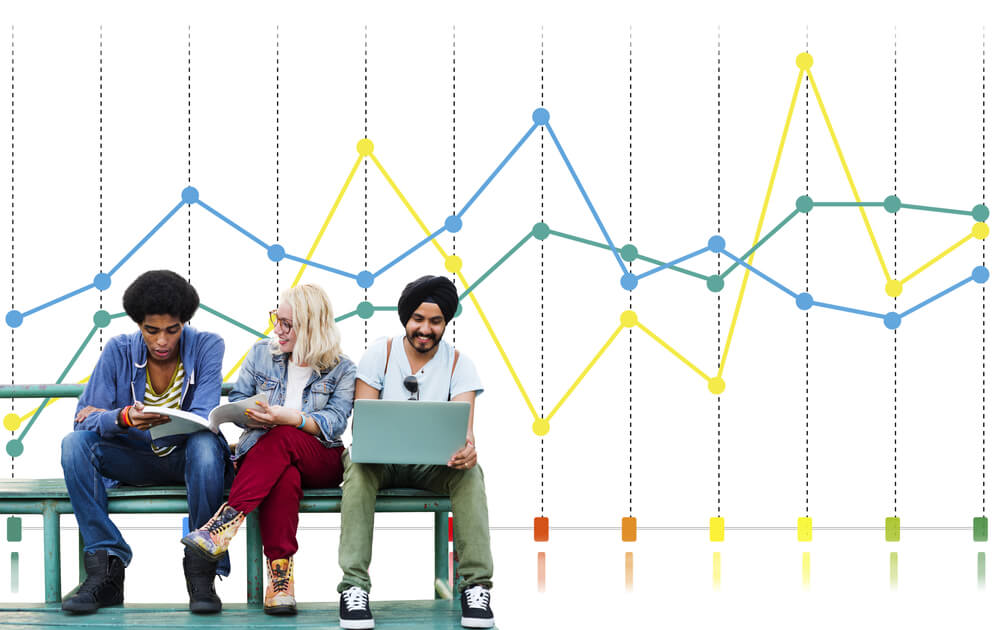
This is an introductory unit in statistical methods with the emphasis on statistical techniques applicable to the social sciences.
This course is being offered face-to-face at the University of Melbourne, unless otherwise advised.
This course is also being offered online from Jan 16-20
You can visit the course page by following this link
In this course, you will obtain a solid foundation in basic statistical concepts and procedures to progress with some confidence into more advanced topics. This is an introductory unit in statistical methods emphasising statistical techniques applicable to the social sciences, although these introductory techniques are also relevant to the health sciences. Key examples from journal articles will illustrate the use and reporting of the statistical techniques covered in this unit.
The approach to learning will be largely non-mathematical, concentrating on concepts rather than mathematical theory.
Software
The course will use the free and open-source software jamovi, which can be downloaded from https://www.jamovi.org/download.html.
While jamovi is built on top of the R statistical language, it has a look and feel very similar to IBM SPSS Statistics and is easier to use in many ways.
Depending on student preferences, there will be an opportunity to use IBM SPSS Statistics v28. Instructions will be provided for both packages, and students can choose to use either jamovi or IBM SPSS Statistics v28.
Day 1
- Level of measurement of data
- Descriptive statistics for a single variable including summary statistics, graphs, writing brief summary reports
- Histogram, stemplot, boxplot, bar chart, pie chart, frequency tables
- Mean, median, mode, std deviation, quartiles, range, outliers
Day 2
- Descriptive statistics for relationships between two variables
- Comparative boxplots, scatterplots, contingency tables, clustered and stacked bar charts.
- Introduction to correlation and regression.
- The normal distribution, standardisation
Day 3
- Foundations of statistical inference
- Sampling distribution of the mean
- Introduction to hypothesis testing, confidence intervals, effect size statistics
- z-test and one sample t-test
Day 4
- Hypothesis tests, confidence intervals, effect size statistics (Cohen's d, eta-squared and omega) for the following
- Paired and independent samples t-tests, one-way ANOVA (brief introduction)
- How to test the assumption of normality and equal variance
- Introduction to GPower for determining the sample size required to achieve a given level of power for studies involving independent samples t-tests or ANOVA
- Limitation of p-values and statistical significance
Day 5
- Hypothesis tests, confidence intervals, effect size statistics, testing of assumptions for the following
- Single proportion, Chi-square test, Pearson correlation
- Choosing the correct statistical test
This course may run in a computer lab, or you may be advised to bring your own laptop with specified software.
We will let you know in advance.
There are no prerequisites for this course, nor is previous computing experience necessary.
The instructor's bound, book-length course notes will serve as the course text.
The notes contain detailed explanations and examples of all the statistical concepts covered. Detailed instructions will also be provided on how to obtain the statistical output both from jamovi and IBM SPSSv28.
Q. Do I have to know any statistics to do this course?
A. No, there are no prerequisties and you don't need any computing experience.
Extremely useful for higher degree research as a beginning step.
It provided an excellent understanding of the underlying principles of statistics that helped understand the techniques taught as well as underpinning of future statistical techniques.
The workbooks were great and the tasks were well connected to the coursework and these workbooks. It felt like there was a great balance between doing activities ourselves and the teacher-led sessions.
I’ve always found statistics to be difficult abstact and confusing. I had many aha moments with Imma - she’s a great teacher.
It provided fundamental thinking & reasoning behind concepts I see at work such as confidence intervals & involved some maths - which makes me want to learn more.
Went through each topic well with a great balance of theory/ lecture / practical / demonstration and practise labs and computer use.
Coming from a non stats background! I have gained a very informed intro to stats.
I will be more literate in reading literature drawing on statistics in myfield as well as able to apply some of the techniques myself.
very well balanced. Loved the activity book with step-by-step notes.
I have learnt so many basic concepts that I have been expected to understand. To have the opportunity to learn them is fantastic.
The instructor's bound, book length course notes will serve as the course text.
